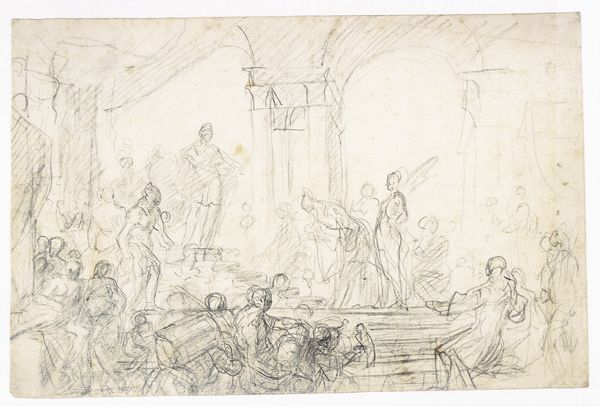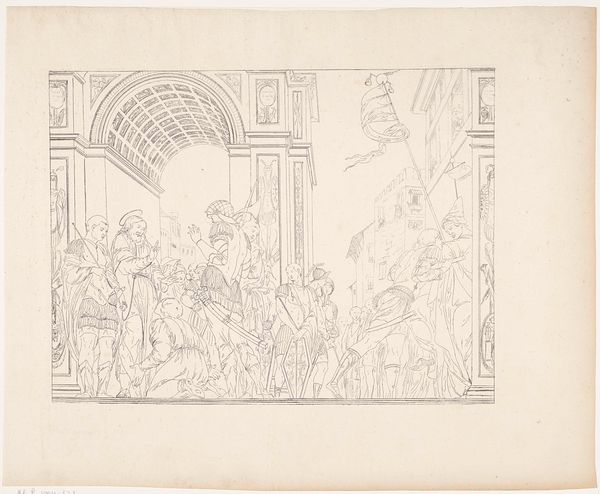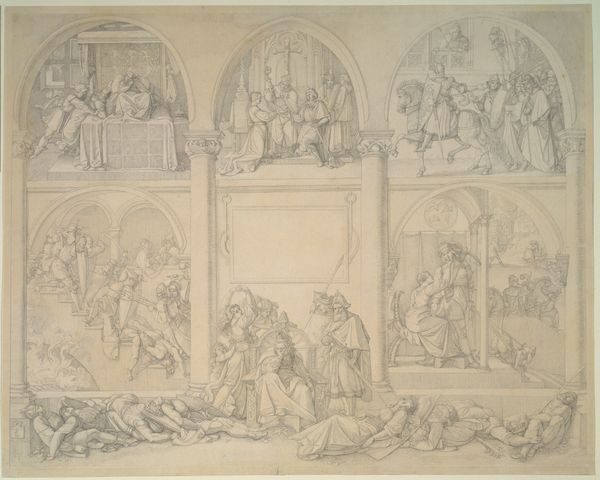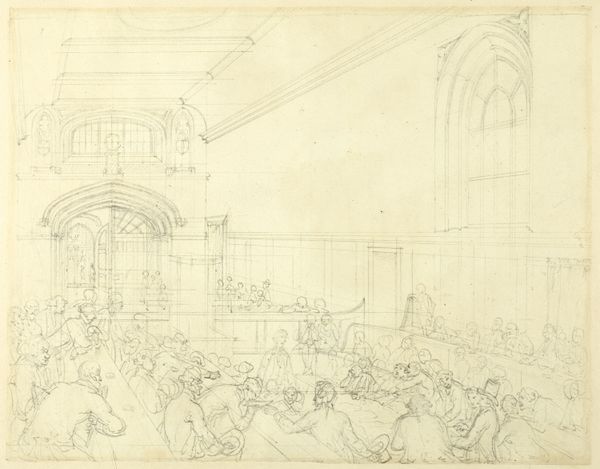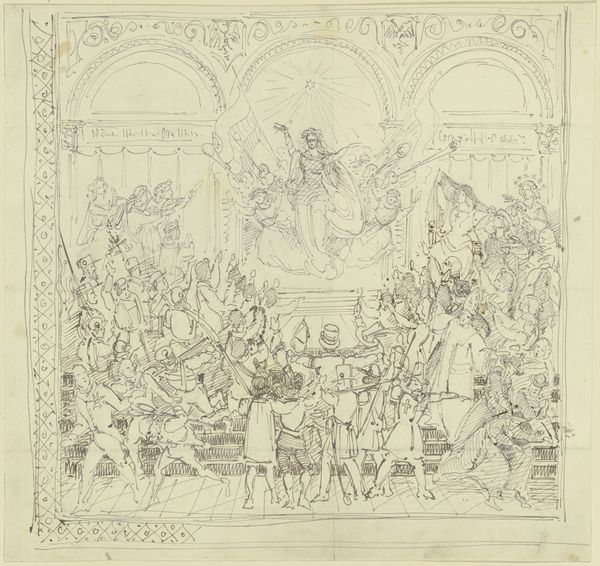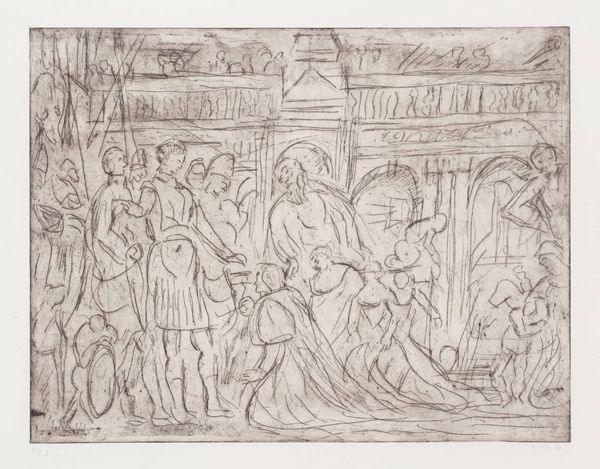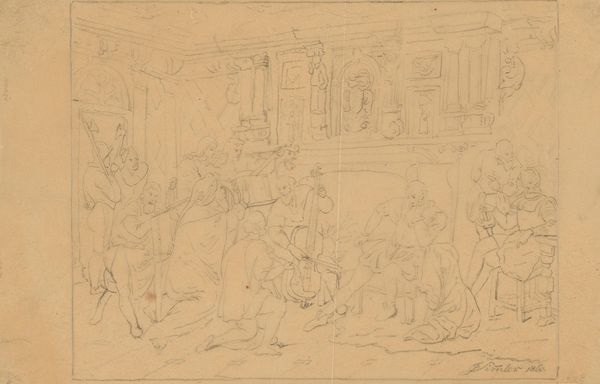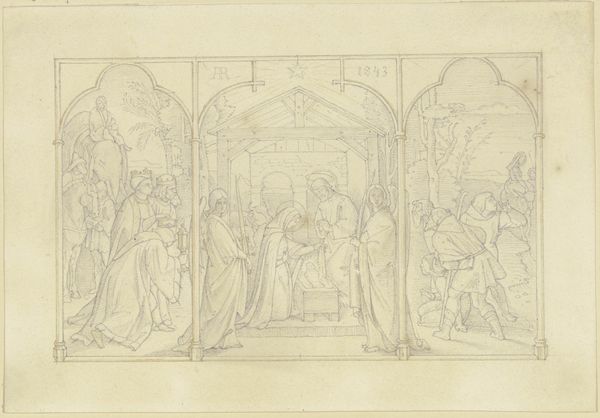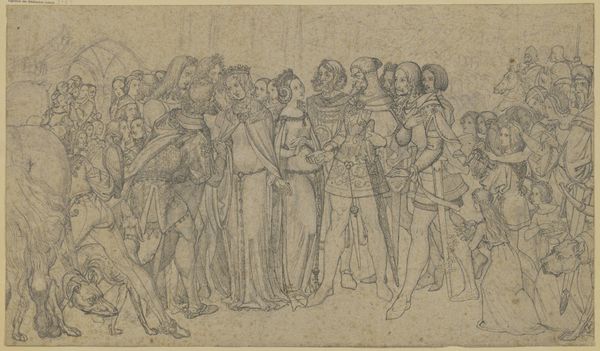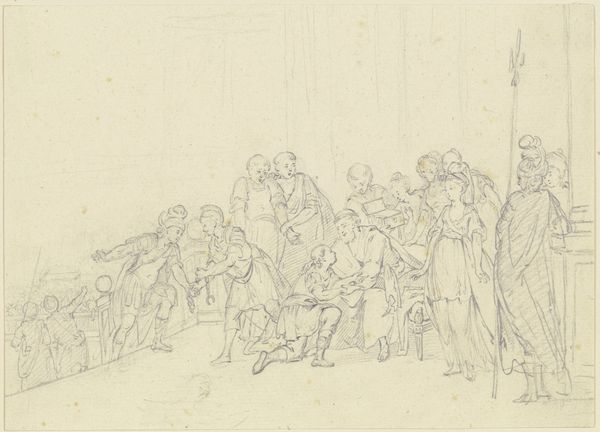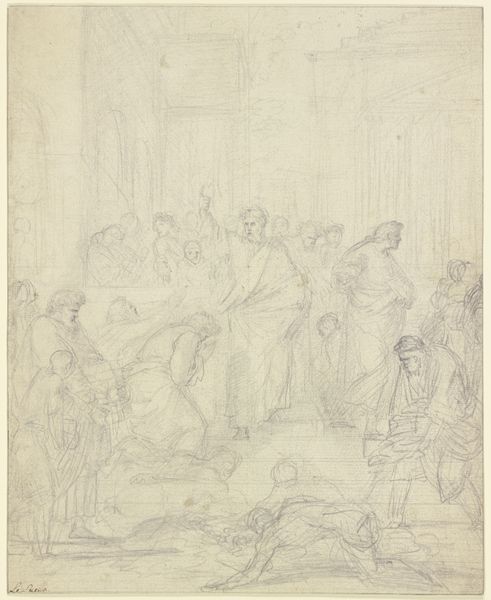
drawing, pencil
#
drawing
#
landscape
#
figuration
#
pencil
#
genre-painting
#
academic-art
Dimensions: overall (approximate): 24.2 x 32.6 cm (9 1/2 x 12 13/16 in.)
Copyright: National Gallery of Art: CC0 1.0
Curator: Welcome, everyone. Let's turn our attention to this intricate drawing by Rodolphe Bresdin entitled "Interior: Dancing Girls Entertaining Chieftains," created around 1870 using pencil. Editor: It's an initial impression, like a memory trying to form. So ethereal; I feel pulled into this bustling scene rendered in soft pencil lines. The figures almost float. Curator: Bresdin's historical context is key. Consider that he never achieved mainstream success in his time, struggling financially and artistically despite the Symbolist movement recognizing the visionary quality in his work. What strikes me about "Interior: Dancing Girls" is how it merges Orientalist fantasy with meticulous, academic detailing. Editor: I find that fantasy equally intriguing and troubling. How do we contextualize this genre scene given the power dynamics inherent in colonialist narratives of the time? Who has the power here, watching whom? The dancers put on a spectacle in an ornate interior. Curator: Indeed. The art world consumed imagery linked to conquest, exotification, and representation during the French colonial period and subsequent development of Orientalist themes. The art market and its elite collectors perpetuated certain perceptions about Eastern cultures, some respectful but other narratives much more harmful and othering. It prompts questions regarding agency and cultural representation. Editor: It does, doesn't it? It asks about who controls the gaze, who gets to be seen, and what stereotypes are reinforced. Even in this medium with almost imperceptible lines, those historical and social power structures make themselves visible. Bresdin's skill is clear, but the layers of representation merit critical interrogation today. Curator: Absolutely. That interplay is vital. The composition’s hierarchy and placement of the chieftain figures overseeing the entertainment below reflects contemporary society and, by extension, can perpetuate that unequal power. Editor: Looking closer at their faces, that tension rises once more; those sketched figures in the upper balcony appear like voyeurs. In their blurred and incomplete presentation, are the "chieftains" intended to be romanticized in their regalia, or does something critical linger in that almost caricaturist aesthetic? Curator: This perspective is compelling, and really prompts one to reconsider his rendering of them as almost phantom observers versus engaged participants. Ultimately, Bresdin gives us a chance to reflect on how the arts portray complex global histories. Editor: Definitely. As unsettling and complex as it is captivating, it's a reminder that artistic interpretations aren't neutral—they echo social conditions that necessitate vigilant thought and re-evaluation.
Comments
No comments
Be the first to comment and join the conversation on the ultimate creative platform.

